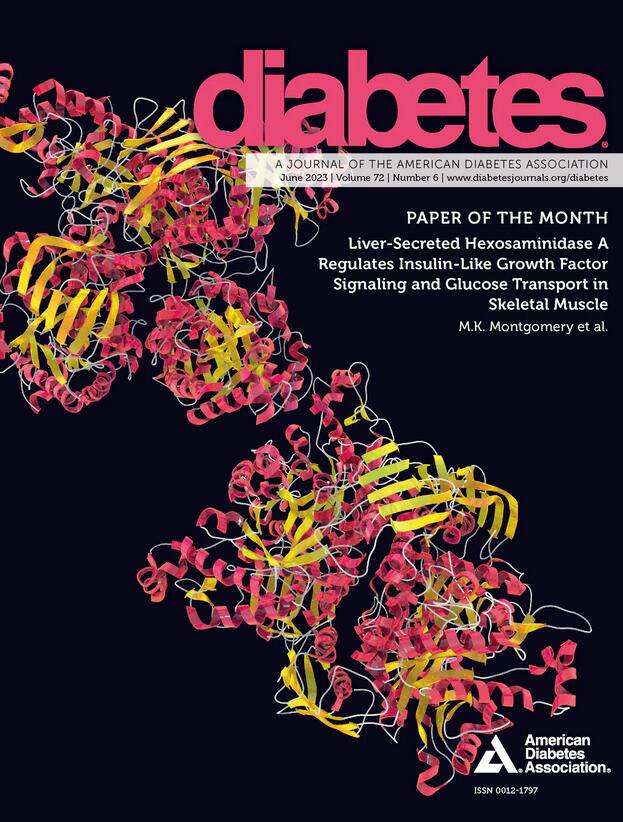2043-LB: Universal Access to GLP1-RAs Could Reduce Global Obesity Prevalence by 20% and Save 28 Million Lives over Five Years—A Microsimulation Study
IF 7.5
1区 医学
Q1 ENDOCRINOLOGY & METABOLISM
引用次数: 0
Abstract
Introduction and Objective: GLP-1RA drugs have demonstrated benefits for people with type 2 diabetes mellitus (T2DM) or obesity, however, medication access is limited. This microsimulation study modeled the impact of increased access to semaglutide globally on the burden of 7 conditions. Methods: We developed and validated a microsimulation model incorporating age-, sex-, and country-specific prevalence and incidence data for T2DM, obesity, CVD, CKD, stroke, ESKD, and all-cause mortality, using data from the 2021 Global Burden of Disease and NCD-RisC studies. A simulation experiment was conducted to evaluate the effects of providing universal access to semaglutide on these key health outcomes over 5 years across 196 countries. Results: Of the worldwide adult population of approximately 6.1 billion, 19.0% met eligibility criteria for semaglutide use, based on a prevalence of 8.76% for type 2 diabetes and 16.4% for obesity. Universal access to semaglutide could reduce 5-year all-cause mortality by 7.41% (absolute change (AC): -0.29%, 95% CI: -0.47 to -0.10%; about 28M lives) and obesity prevalence by 21.9% (AC -5.42%, 95% CI: -6.48 to -4.36%; about 330M fewer obese individuals). Country specific results on all health outcomes are presented in Figure 1. Conclusion: Expanding access and affordability to GLP-1RA can significantly improve health worldwide. Disclosure E. Staton: None. P. Li: None. J. Lee: None. K. Narayan: None. M.K. Ali: Advisory Panel; Eli Lilly and Company. I. Graetz: Research Support; Pfizer Inc, PRIME Education, LLC. H. Shao: None. Funding National Institutes of Health (R01DK133465)2043-LB:普遍获得GLP1-RAs可在五年内将全球肥胖患病率降低20%并挽救2800万人的生命
简介和目的:GLP-1RA药物已被证明对2型糖尿病(T2DM)或肥胖患者有益,然而,药物可及性有限。这项微观模拟研究模拟了全球增加获得西马鲁肽对7种疾病负担的影响。方法:我们开发并验证了一个微观模拟模型,该模型包含T2DM、肥胖、CVD、CKD、中风、ESKD和全因死亡率的年龄、性别和国家特定患病率和发病率数据,使用的数据来自2021年全球疾病负担和非传染性疾病- risc研究。进行了一项模拟实验,以评估在196个国家的5年中普遍提供西马鲁肽对这些关键健康结果的影响。结果:在全球约61亿成年人中,19.0%符合使用西马鲁肽的资格标准,基于2型糖尿病患病率为8.76%,肥胖患病率为16.4%。普遍获得西马鲁肽可使5年全因死亡率降低7.41%(绝对变化(AC): -0.29%, 95% CI: -0.47至-0.10%;约2800万人死亡)和肥胖患病率降低21.9% (AC -5.42%, 95% CI: -6.48至-4.36%;大约3.3亿人肥胖)。图1列出了各国在所有卫生成果方面的具体成果。结论:扩大GLP-1RA的可及性和可负担性可显著改善全球健康状况。E.工作站:无。李:没有。J.李:没有。纳拉扬:没有。M.K. Ali:咨询小组;礼来公司。I. Graetz:研究支持;辉瑞公司,PRIME教育有限责任公司。国家卫生研究院资助(R01DK133465)
本文章由计算机程序翻译,如有差异,请以英文原文为准。
求助全文
约1分钟内获得全文
求助全文
来源期刊

Diabetes
医学-内分泌学与代谢
CiteScore
12.50
自引率
2.60%
发文量
1968
审稿时长
1 months
期刊介绍:
Diabetes is a scientific journal that publishes original research exploring the physiological and pathophysiological aspects of diabetes mellitus. We encourage submissions of manuscripts pertaining to laboratory, animal, or human research, covering a wide range of topics. Our primary focus is on investigative reports investigating various aspects such as the development and progression of diabetes, along with its associated complications. We also welcome studies delving into normal and pathological pancreatic islet function and intermediary metabolism, as well as exploring the mechanisms of drug and hormone action from a pharmacological perspective. Additionally, we encourage submissions that delve into the biochemical and molecular aspects of both normal and abnormal biological processes.
However, it is important to note that we do not publish studies relating to diabetes education or the application of accepted therapeutic and diagnostic approaches to patients with diabetes mellitus. Our aim is to provide a platform for research that contributes to advancing our understanding of the underlying mechanisms and processes of diabetes.
 求助内容:
求助内容: 应助结果提醒方式:
应助结果提醒方式:


